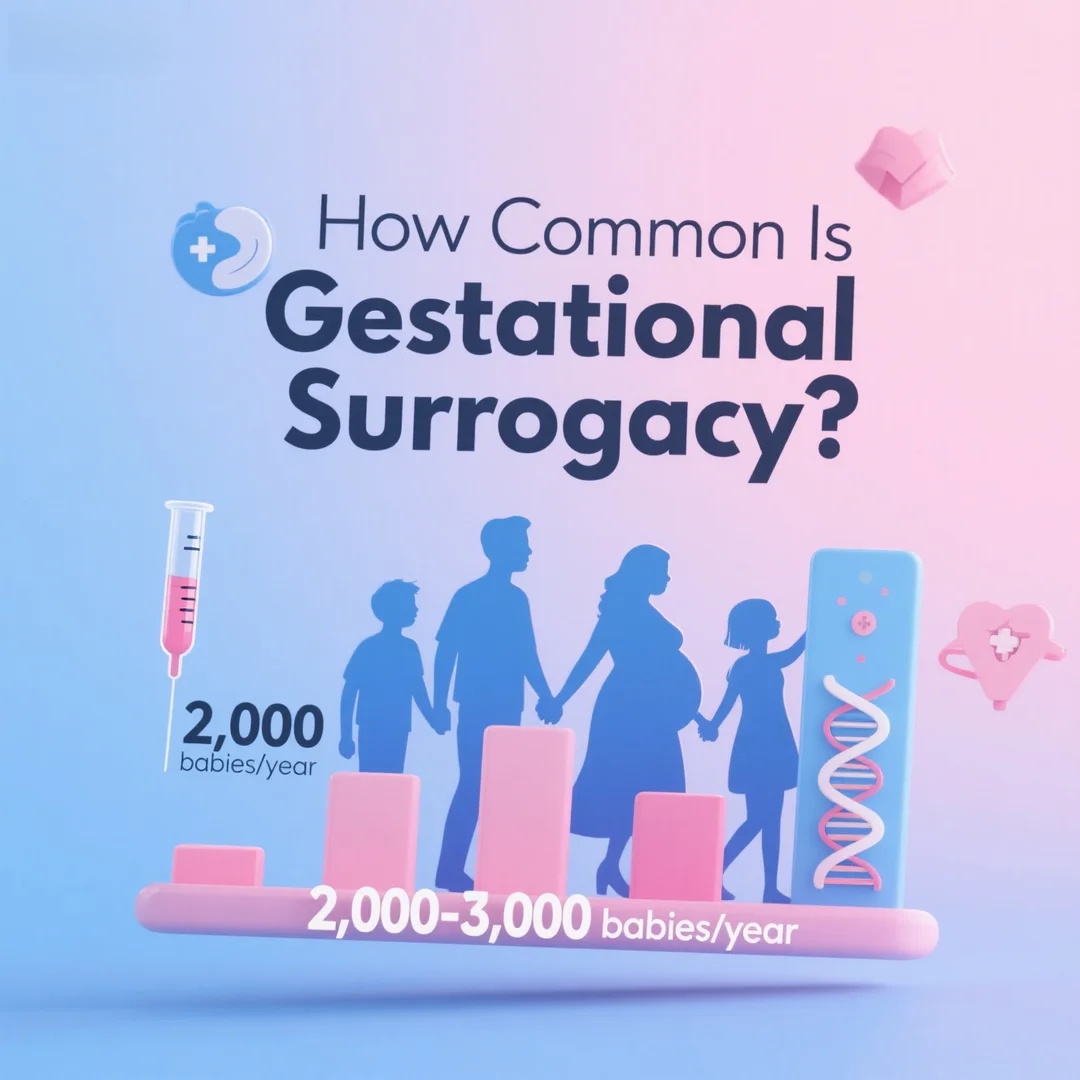Gestational surrogacy—where a woman carries a pregnancy for intended parents using an embryo created via IVF—is growing in popularity but remains a small fraction of overall births. In the U.S., 2,000–3,000 babies are born via surrogacy annually, with gestational surrogacy (GS) accounting for 85%+ of cases worldwide. Globally, an estimated 20,000–30,000 surrogate births occur each year, with the U.S. contributing 20–30% of that total.
U.S. Surrogacy Trends
- Share of ART Cycles
- About 4–5% of assisted reproductive technology (ART) cycles involve a gestational carrier, up from 2.4% in 2012.
- In 2021, the U.S. recorded 413,776 ART cycles, resulting in 91,906 live births—yet GS-driven births made up <1% of all U.S. infants that year.
- Who Uses Gestational Surrogacy?
- Common among:
- LGBTQ+ couples (especially gay men).
- Single parents (via egg/sperm donation).
- Women with medical infertility (e.g., uterine issues, recurrent pregnancy loss).
- Common among:
Global Context
- Dominance of Gestational Surrogacy: Traditional surrogacy (using the surrogate’s egg) is now rare; 85%+ of cases worldwide are GS.
- Top Markets: The U.S. (particularly California), Canada, Ukraine, and Greece lead in legal frameworks and clinic availability.
- Legal Variability: Some countries ban surrogacy entirely (e.g., France, Germany), while others restrict it to altruistic models (e.g., UK, Australia).
Why It Matters
- Growth: Demand is rising due to societal shifts (e.g., later parenthood, LGBTQ+ family-building).
- Niche but Impactful: Though still a tiny fraction of births, GS reshapes reproductive rights, legal parenthood, and ethical debates.
- U.S. Disparities: States like California and Illinois are surrogacy-friendly, while others impose bans or legal uncertainties.
Final Takeaway: Gestational surrogacy is a vital, expanding option for modern families—but its accessibility depends heavily on location, cost, and evolving laws.
(Sources: CDC, SART, WHO, and surrogacy advocacy reports.)




